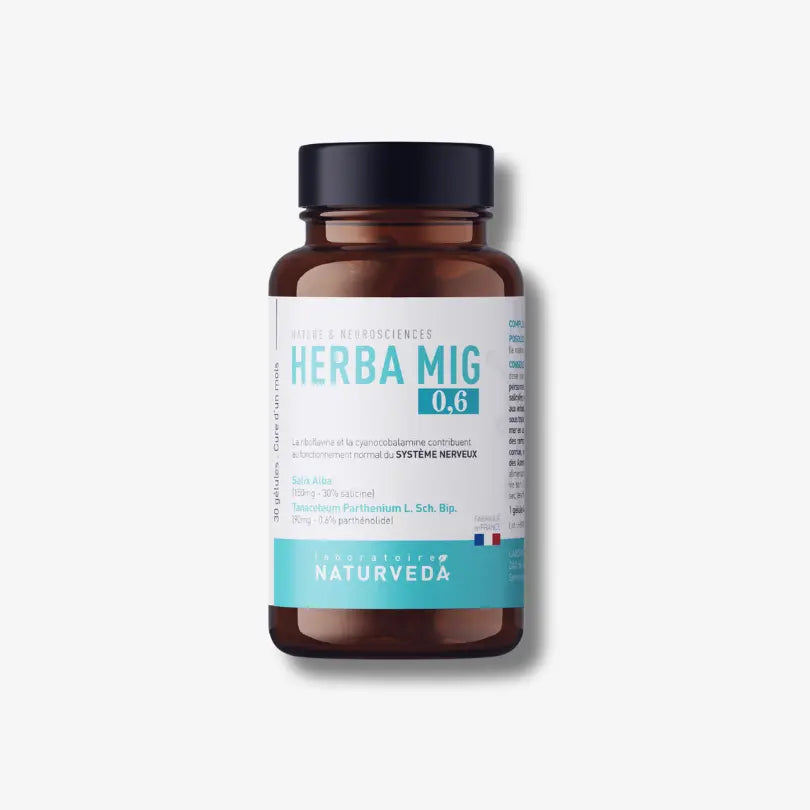Depuis des siècles, les fleurs sauvages ont été un trésor caché de la nature, offrant une multitude de bienfaits pour notre santé et bien-être. Pourtant, dans un monde dominé par les médicaments synthétiques et les traitements de pointe, ces merveilles naturelles sont souvent négligées. Cet article se propose de vous faire redécouvrir les pouvoirs étonnants des fleurs sauvages, telles que le pissenlit, la chicorée et le plantain, et comment elles peuvent transformer votre routine de bien-être quotidienne. Plongez avec nous dans cet univers fascinant et découvrez comment ces plantes peuvent vous aider à atteindre une santé optimale et un bien-être durable.
Les points clés à retenir
- Les fleurs sauvages comme le pissenlit, la chicorée et le plantain possèdent des propriétés médicinales impressionnantes.
- Ces plantes peuvent être utilisées sous diverses formes, telles que des tisanes, des infusions, et même en applications topiques.
- Leur utilisation régulière peut contribuer à renforcer votre système immunitaire, améliorer votre digestion, et même soulager certains maux chroniques.
- Les fleurs sauvages représentent une alternative naturelle et durable aux médicaments chimiques.
- Comprendre et utiliser ces plantes vous permet de vous reconnecter avec la nature et de prendre en main votre santé de manière holistique.
Les bienfaits du pissenlit : Un trésor médicinal sous-estimé
Le pissenlit, souvent considéré comme une mauvaise herbe envahissante, est en réalité une plante dotée de nombreux bienfaits pour la santé. Chaque partie du pissenlit, de la racine à la fleur, possède des propriétés spécifiques qui peuvent être intégrées à votre routine de bien-être.
Les propriétés détoxifiantes du pissenlit
La racine de pissenlit est particulièrement réputée pour ses propriétés détoxifiantes. Elle aide à purifier le foie et à stimuler la production de bile, ce qui facilite la digestion et l'élimination des toxines. Consommer du thé de racine de pissenlit peut ainsi aider à maintenir la santé du foie et à améliorer la digestion.
Des nutriments à profusion
Les feuilles de pissenlit sont également riches en nutriments essentiels comme les vitamines A, C et K, ainsi que des minéraux tels que le fer, le calcium et le potassium. Ajouter des feuilles de pissenlit à vos salades peut vous fournir une dose concentrée de ces nutriments, favorisant ainsi votre bien-être général.
Les effets anti-inflammatoires
Le pissenlit possède des propriétés anti-inflammatoires naturelles, qui peuvent aider à réduire l'inflammation chronique dans le corps. Cela en fait une option intéressante pour les personnes souffrant de conditions inflammatoires telles que l'arthrite.
La chicorée : Plus qu'un substitut de café
La chicorée est une autre fleur sauvage aux multiples bienfaits pour la santé. Souvent utilisée comme substitut de café grâce à sa saveur riche et terreuse, la chicorée offre bien plus que cela.
Amélioration de la digestion
Parmi les bienfaits les plus notables de la chicorée, on trouve son action bénéfique sur le système digestif. La racine de chicorée contient de l'inuline, une fibre prébiotique qui favorise la croissance des bonnes bactéries intestinales. En consommant de la chicorée, vous pouvez ainsi améliorer votre santé intestinale et favoriser une digestion plus efficace.
Régulation du taux de sucre dans le sang
L'inuline présente dans la chicorée aide également à réguler le taux de glycémie. Elle ralentit l'absorption des glucides par le corps, ce qui peut être particulièrement bénéfique pour les personnes souffrant de diabète ou d'hyperglycémie.
Propriétés anti-inflammatoires et antioxydantes
La chicorée est également riche en antioxydants, qui aident à combattre les radicaux libres et à réduire l'inflammation dans le corps. Consommer régulièrement de la chicorée peut ainsi contribuer à une meilleure santé globale et à la prévention de diverses maladies.
Le plantain : Un remède naturel polyvalent
Le plantain est une autre plante sauvage aux nombreuses vertus. Souvent trouvé dans les pelouses et les terrains vagues, il est connu pour ses propriétés curatives et apaisantes.
Un excellent cicatrisant
Le plantain est couramment utilisé pour traiter les plaies, les piqûres d'insectes, et les inflammations cutanées. Appliqué sous forme de cataplasme, il aide à accélérer la cicatrisation et à apaiser la peau irritée.
Propriétés anti-allergiques
Le plantain possède également des propriétés anti-allergiques, et peut être utilisé pour apaiser les symptômes d'allergies saisonnières. Préparer une infusion de feuilles de plantain peut aider à réduire les éternuements, les démangeaisons, et d'autres symptômes allergiques.
Support pour le système respiratoire
En plus de ses bienfaits pour la peau, le plantain est également bénéfique pour le système respiratoire. Il peut aider à soulager la toux, le rhume, et autres affections respiratoires grâce à ses propriétés anti-inflammatoires et expectorantes.
D'autres fleurs sauvages bénéfiques
Outre le pissenlit, la chicorée et le plantain, de nombreuses autres fleurs sauvages offrent des bienfaits impressionnants pour la santé et le bien-être.
La camomille : Apaisante et digestive
La camomille est largement reconnue pour ses propriétés apaisantes et digestives. Une infusion de camomille peut aider à réduire le stress, améliorer le sommeil, et soulager les troubles digestifs tels que les ballonnements et les crampes d'estomac.
Le trèfle rouge : Détoxifiant et riche en nutriments
Le trèfle rouge est une autre fleur sauvage bénéfique, connue pour ses propriétés détoxifiantes et sa richesse en nutriments. Il peut être utilisé sous forme de tisane pour purifier le sang et soutenir la santé générale.
L'ortie : Anti-inflammatoire et riche en vitamines
Enfin, l'ortie est une plante sauvage aux propriétés anti-inflammatoires puissantes et une grande richesse en vitamines et minéraux. Elle peut être intégrée à votre régime alimentaire sous forme de soupe, de tisane, ou même de complément alimentaire, pour renforcer votre système immunitaire et améliorer votre santé globale.
Les fleurs sauvages dans votre routine de bien-être
Intégrer les fleurs sauvages dans votre routine de bien-être quotidienne est une manière simple et naturelle de profiter de leurs nombreux bienfaits pour la santé. Voici quelques idées pratiques pour commencer :
Faire des tisanes et des infusions
Les tisanes et les infusions sont une excellente manière de tirer parti des propriétés des fleurs sauvages. Par exemple, vous pouvez préparer une infusion de chicorée pour favoriser la digestion, ou une tisane de camomille pour vous détendre avant de dormir.
Utiliser des cataplasmes et des baumes
Pour profiter des propriétés curatives des fleurs sauvages, vous pouvez préparer des cataplasmes ou des baumes maison. Appliquer un cataplasme de plantain sur une piqûre d'insecte ou une petite coupure peut aider à accélérer la guérison et à réduire l'inflammation.
Ajouter des fleurs sauvages à vos repas
En incorporant des fleurs sauvages à vos recettes, vous pouvez profiter de leurs propriétés nutritionnelles de manière savoureuse. Ajoutez des feuilles de pissenlit à vos salades, faites infuser des fleurs d'ortie dans vos soupes, ou utilisez du trèfle rouge pour enrichir vos smoothies.
Comment récolter et utiliser les fleurs sauvages en toute sécurité
Lors de la récolte de fleurs sauvages, il est essentiel de s'assurer que vous les collectez dans des zones propres et non polluées. Évitez les sites proches des routes ou des zones industrielles, ainsi que les plantes ayant été traitées avec des pesticides. Voici quelques conseils pour une récolte sécuritaire :
Identifier correctement les plantes
Assurez-vous de bien identifier les plantes avant de les récolter. Certaines fleurs sauvages peuvent ressembler à d'autres plantes potentiellement toxiques. Utilisez des guides de terrain fiables ou consultez un expert en botanique pour éviter toute confusion.
Récolter de manière éthique
Lorsque vous cueillez des fleurs sauvages, faites-le de manière responsable pour ne pas endommager l'écosystème local. Prenez uniquement ce dont vous avez besoin et laissez suffisamment de plantes pour que l'espèce puisse continuer à prospérer.
Préparer et conserver les fleurs sauvages
Après la récolte, préparez soigneusement les fleurs sauvages pour les utiliser. Lavez-les à l'eau claire pour éliminer toute saleté ou impurité. Vous pouvez les sécher pour les conserver plus longtemps, ou les utiliser fraîches selon vos besoins.
Les questions les plus souvent posées
Les fleurs sauvages sont-elles sécuritaires à utiliser ?
Oui, mais il est crucial de s'assurer que vous identifiez correctement les plantes et que vous les récoltez dans des zones sans pollution ni pesticides. En cas de doute, consultez toujours un expert.
Peut-on consommer des fleurs sauvages quotidiennement ?
Oui, de nombreuses fleurs sauvages, comme le pissenlit et la chicorée, peuvent être consommées régulièrement pour leurs bienfaits. Cependant, la modération est clé pour éviter toute réaction indésirable.
Comment préparer une infusion de fleurs sauvages ?
Pour préparer une infusion, ajoutez simplement quelques grammes de plantes séchées dans de l'eau bouillante et laissez infuser pendant 5 à 10 minutes. Filtrez et dégustez.
Est-il possible d'acheter des fleurs sauvages séchées ?
Oui, de nombreuses herboristeries et magasins bio proposent des fleurs sauvages séchées, prêtes à l'emploi pour des infusions, des cataplasmes ou autres usages.




